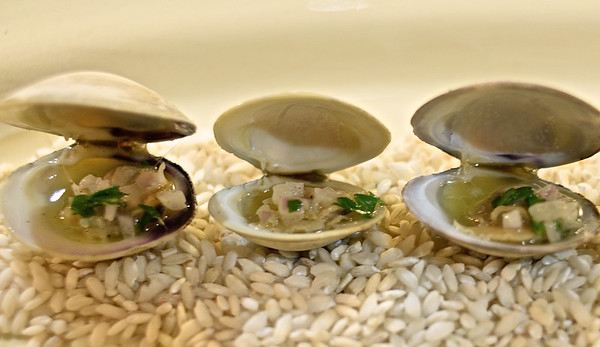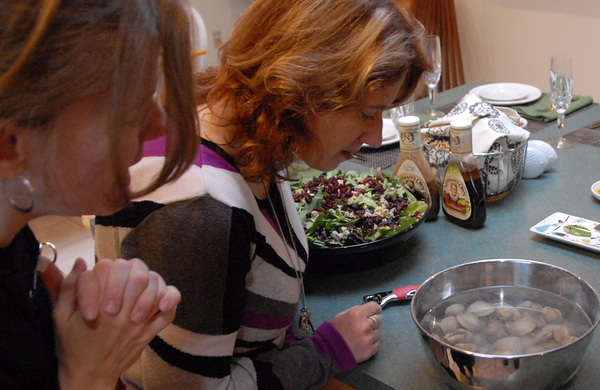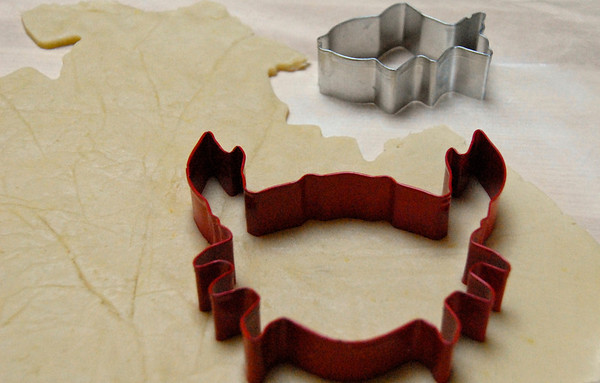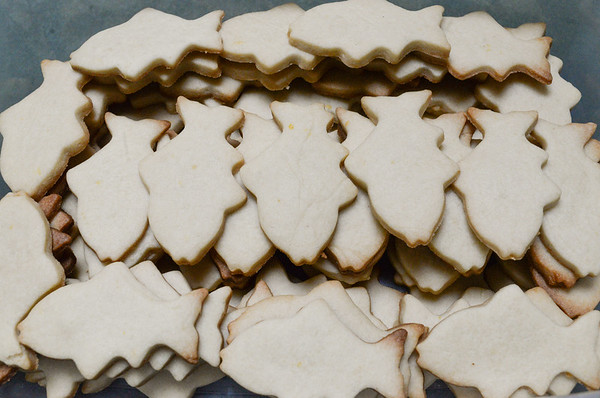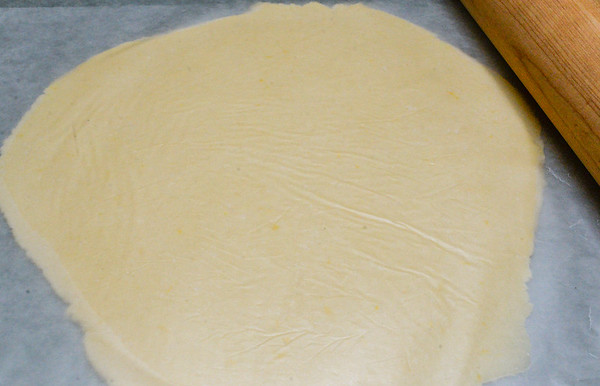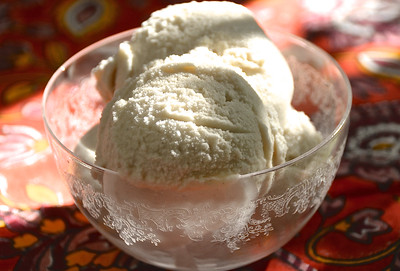 This time of year, along with a surplus of apples, I usually have a refrigerator crammed full of apple cider. In my twenties I could blame this excess on my next-door-neighbors and their prolific orchard. Every fall they’d collect the grubbiest apples, take them to a cider mill and press bushel upon bushel into sweet, murky cider. What they didn’t freeze, they gave away to family, friends, colleagues and me. Although I ended up with more than I could ever consume, this distribution barely put a dent in their cider supply.
This time of year, along with a surplus of apples, I usually have a refrigerator crammed full of apple cider. In my twenties I could blame this excess on my next-door-neighbors and their prolific orchard. Every fall they’d collect the grubbiest apples, take them to a cider mill and press bushel upon bushel into sweet, murky cider. What they didn’t freeze, they gave away to family, friends, colleagues and me. Although I ended up with more than I could ever consume, this distribution barely put a dent in their cider supply.
What did my neighbors do with all that apple cider? They roasted meats and sautéed vegetables in it. They poured it over dry cereal and, of course, drank it. Think of any creative way to use this beverage in your kitchen and, chances are, they did it.
Inspired by their resourcefulness, I occasionally cook with cider. As this practice is more rare than regular, I have multiple jugs of cider hiding out in my fridge.
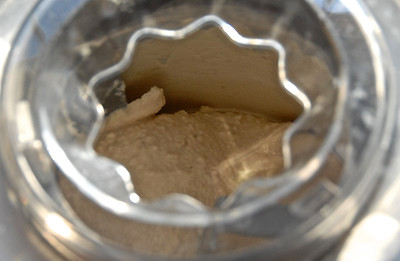 When I do dig out a half-gallon container, I use the cider to jazz up pumpkin and butternut squash soups, quick breads and cookies. As of late, though, I’ve been spicing it up, boiling it down and churning it into ice cream.
When I do dig out a half-gallon container, I use the cider to jazz up pumpkin and butternut squash soups, quick breads and cookies. As of late, though, I’ve been spicing it up, boiling it down and churning it into ice cream.
Mulled apple cider ice cream is delicious on its own, atop apple cobbler, pear tart or mince pie or alongside gingersnaps or a rich gingerbread. Needless to say, it’s a lovely ending to a fall meal and especially to Thanksgiving dinner.
MULLED APPLE CIDER ICE CREAM
Makes roughly 5 cups
2 1/2 cups apple cider
3/4 cup plus 1 tablespoon granulated sugar
2 cinnamon sticks
1 teaspoon whole cloves
1/2 teaspoon ground ginger
pinch of nutmeg
2 cups heavy whipping cream
2 cups low-fat milk
1/4 teaspoon ground cinnamon
Place the apple cider, sugar, cinnamon sticks, cloves, ginger and nutmeg in a medium saucepan and bring to a boil. Simmer, whisking periodically, until the liquid thickens and reduces down to 1 cup, 25 to 30 minutes. Pour the mulled cider through a fine mesh strainer and into a bowl; I usually strain the cider into a glass measuring cup first to ensure that it’s been reduced enough and then pour it into a bowl.
Add the cream, milk and cinnamon to the cider and whisk until well-combined. Refrigerate for an hour or until chilled.
If using an ice cream maker, follow the manufacturer’s instructions for making ice cream. If doing this by hand, pour the cream mixture into a shallow, glass or ceramic dish and place in the freezer. Remove the pan from the freezer at 40 to 60 minute intervals and stir to break up the ice. Continue freezing and stirring until a thick ice cream has formed.
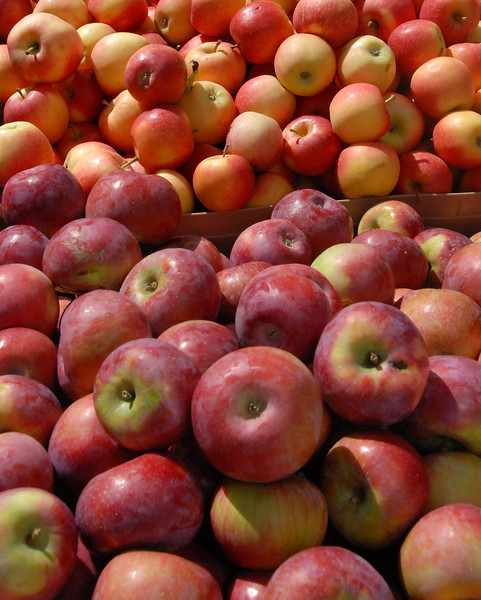 Walk out your front door on any given day this week and what do you see? Withered leaves scattered everywhere. Portly pumpkins plunked on stairways. Colorful mums planted here and there. On the sidewalks people stroll by in coats and scarves, warming their bare hands with take-away coffee cups. For me, these sights can only mean one thing. Apple-picking time is here.
Walk out your front door on any given day this week and what do you see? Withered leaves scattered everywhere. Portly pumpkins plunked on stairways. Colorful mums planted here and there. On the sidewalks people stroll by in coats and scarves, warming their bare hands with take-away coffee cups. For me, these sights can only mean one thing. Apple-picking time is here. 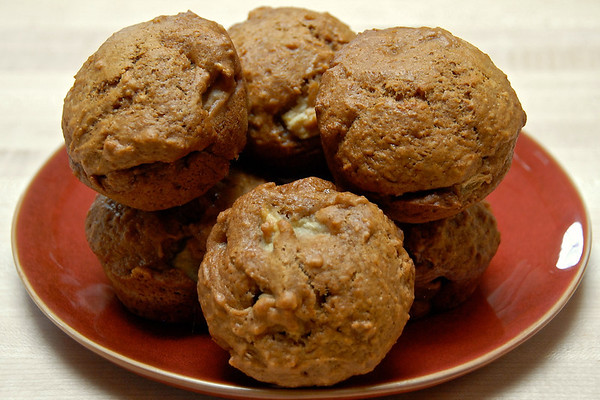 Eight months and another trip later I’ve come up with a second travel-inspired, apple treat, double apple muffins. Very loosely based on the no-bake, Danish dessert
Eight months and another trip later I’ve come up with a second travel-inspired, apple treat, double apple muffins. Very loosely based on the no-bake, Danish dessert 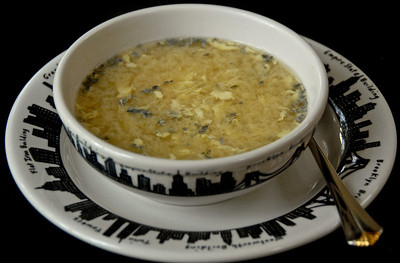 This Saturday I’ll be back on my home turf, speaking at the
This Saturday I’ll be back on my home turf, speaking at the 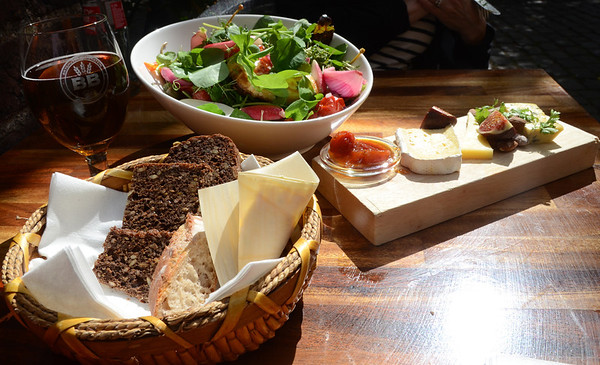
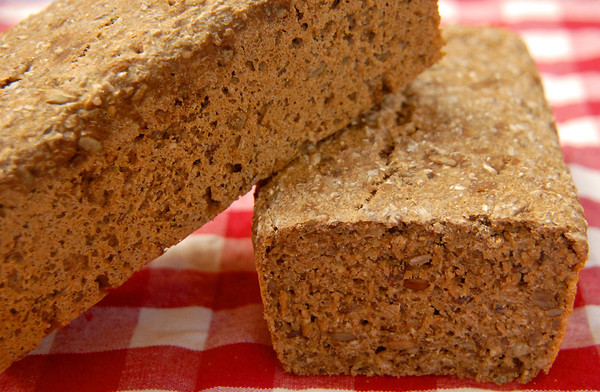
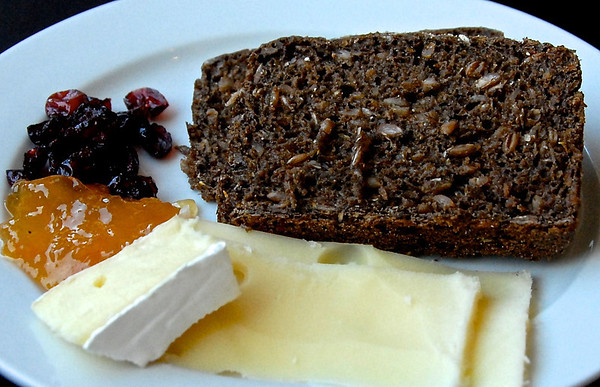
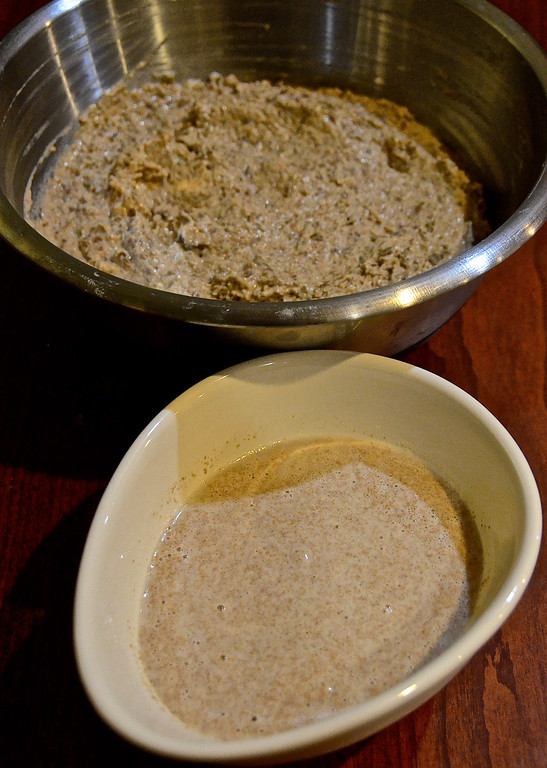
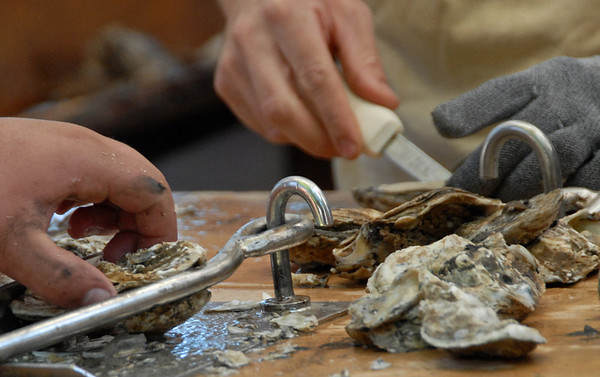 When the invitations to oyster festivals start rolling in, I know that fall is here. Any diehard oyster fan will tell you that during the months of May through August these shellfish spawn, becoming watery and not terribly tasty. Hence the old rule of not eating oysters in a month without an “r” in its name. Once September kicks into full swing, these guys come back, ready to dazzle diners.
When the invitations to oyster festivals start rolling in, I know that fall is here. Any diehard oyster fan will tell you that during the months of May through August these shellfish spawn, becoming watery and not terribly tasty. Hence the old rule of not eating oysters in a month without an “r” in its name. Once September kicks into full swing, these guys come back, ready to dazzle diners.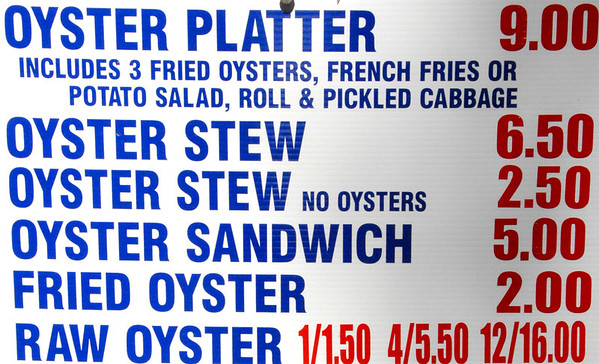 What should you do with a mound of live oysters? Like their bivalve brethren, they do well when baked, broiled, grilled, or steamed. They also can be poached, roasted, or sautéed. As evidenced by the event menu above, they’re quite popular when fried, made into a stew or consumed raw on the half shell. High in omega-three fatty acids and iron, they’re likewise low in calories and fat. Talk about a good treat!
What should you do with a mound of live oysters? Like their bivalve brethren, they do well when baked, broiled, grilled, or steamed. They also can be poached, roasted, or sautéed. As evidenced by the event menu above, they’re quite popular when fried, made into a stew or consumed raw on the half shell. High in omega-three fatty acids and iron, they’re likewise low in calories and fat. Talk about a good treat!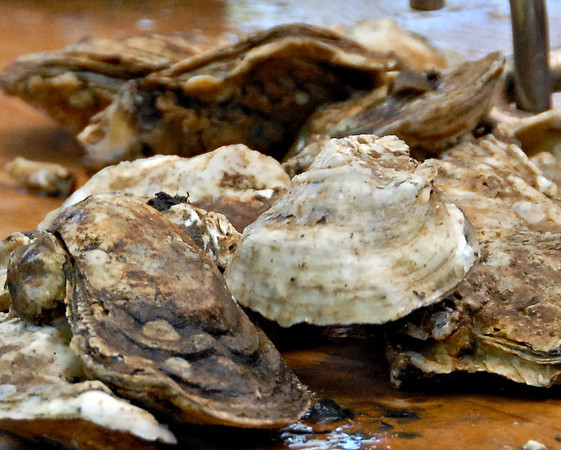 Being faced with counter covered in live oysters can be a bit intimidating. Recently I watched first-time shuckers clumsily pry open shell after sharp, jagged shell. Each time someone placed an oyster in the palm of one bare hand and a paring knife in the other, I imagined the imminent ER trip. If you don’t want to risk stabbing yourself or severing a finger, you can always buy pre-shucked oysters. Before taking them home, check to see that the liquid in their container appears clear. You can also find canned, frozen and smoked oysters in grocery, gourmet, and seafood stores.
Being faced with counter covered in live oysters can be a bit intimidating. Recently I watched first-time shuckers clumsily pry open shell after sharp, jagged shell. Each time someone placed an oyster in the palm of one bare hand and a paring knife in the other, I imagined the imminent ER trip. If you don’t want to risk stabbing yourself or severing a finger, you can always buy pre-shucked oysters. Before taking them home, check to see that the liquid in their container appears clear. You can also find canned, frozen and smoked oysters in grocery, gourmet, and seafood stores. 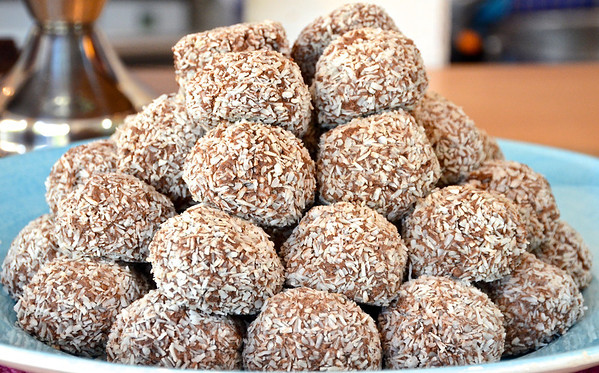 Six years ago, while visiting a friend in Stockholm, Sweden I tried my first chokladbollar. Rich, chocolatey and with the pleasing chewiness of oats and coconut, this unusual sweet lingered on my mind for months. The next time that I went to Sweden, I tracked down not only the confection but also — and more importantly — a recipe for it.
Six years ago, while visiting a friend in Stockholm, Sweden I tried my first chokladbollar. Rich, chocolatey and with the pleasing chewiness of oats and coconut, this unusual sweet lingered on my mind for months. The next time that I went to Sweden, I tracked down not only the confection but also — and more importantly — a recipe for it. 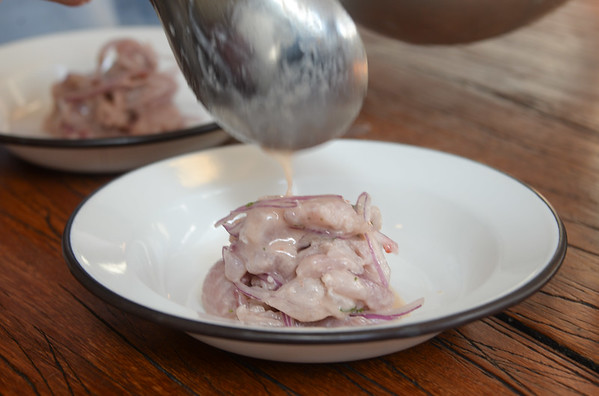 Two weeks ago I turned up in Southern Sweden where one of the first things that I looked for, besides a hotel room, was a coconut-dusted chocolate ball. Turns out that I was in the right place, at least when it came to chokladbollar. Cafes, coffee shops and even bakeries carry this Scandinavian specialty.
Two weeks ago I turned up in Southern Sweden where one of the first things that I looked for, besides a hotel room, was a coconut-dusted chocolate ball. Turns out that I was in the right place, at least when it came to chokladbollar. Cafes, coffee shops and even bakeries carry this Scandinavian specialty.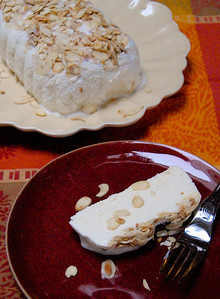 Ask me to name only three fantastic things about summer and I’d have to pick long days, fun getaways and cold foods. Right now I’m hooked on a chilled sweet that I first tried on a sunny, summer holiday in Italy almost a decade ago. Nope, it’s not icy granita, although, on a sultry afternoon, those sugary shards of ice are quite a treat. Instead, semifreddos are what have captured my heart and my spoon.
Ask me to name only three fantastic things about summer and I’d have to pick long days, fun getaways and cold foods. Right now I’m hooked on a chilled sweet that I first tried on a sunny, summer holiday in Italy almost a decade ago. Nope, it’s not icy granita, although, on a sultry afternoon, those sugary shards of ice are quite a treat. Instead, semifreddos are what have captured my heart and my spoon.  Whether you belong to a community garden. shop at farm stands and farmers’ markets or tend your own vegetable patch, right now you’re undoubtedly enjoying some of the best of summer’s bounty. Ripe, luscious tomatoes. Crisp, juicy cucumbers. Cool mint and mildly peppery parsley.
Whether you belong to a community garden. shop at farm stands and farmers’ markets or tend your own vegetable patch, right now you’re undoubtedly enjoying some of the best of summer’s bounty. Ripe, luscious tomatoes. Crisp, juicy cucumbers. Cool mint and mildly peppery parsley. 